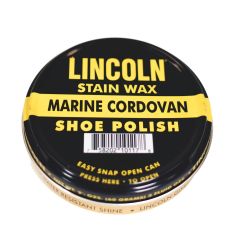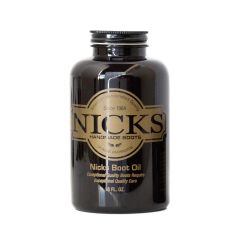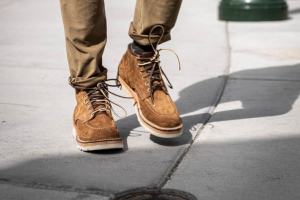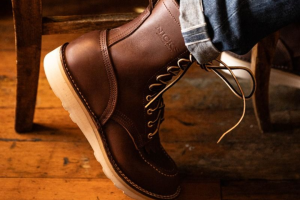How Do I Break In Leather Work Boots?
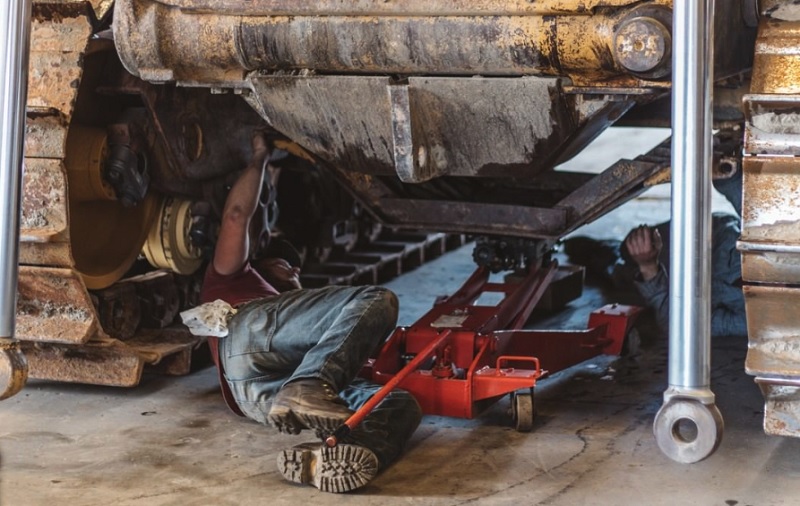
Okay, so you've found a pair of leather work boots (or better yet, ordered a custom pair from a quality bootmaker) and got them home...now what? As everyone knows, the dreaded break-in process must follow.
Leather boot break-in is a critical stage in the life of a work boot. In fact, according to some, it is actually the most critical phase as it sets the rest of the life of the boot in motion. Much like childhood, if the right steps are taken by the parent then the rest of the life that follows should be good.
How do you take those right steps? And how DO you break in a pair of boots? Let's go over the break-in process.
A Good Pair Of Work Boots Will Take Time
The first thing that you need to know is that a quality pair of work boots will take some time to fully break in. If you invest in a pair of quality leather boots, be prepared to wait until break-in has been achieved before using them fully or at least prepare for a bit of pinching while you get them broken in.
Does that mean you shouldn't use them on the job before breaking them in, though?
You don't have to avoid using new boots on the job site, but it is better if you don't for your sake rather than the boots...for the most part. You'll notice that new boots are quite stiff, which can make being on your feet in them a bit less comfortable than you might like.
Additionally, new boots can pop a stitch on occasion as the leather stretches. With handmade custom work boots, it is dramatically less likely, but it has been known to happen every once in a great while. If that should occur, you'll have a work boot that needs to be repaired before it's even broken in, meaning you'll have to wait even longer.
So, prepare to spend a few weeks suffering a little or at least wearing them around the house when not working before wearing your new leather work boots.
Nick's Boots generally will take anywhere from 80 to 100 hours of wear before a break-in occurs, or roughly 3 to 4 weeks. Sometimes, it may take another week or two for your feet to adjust to them. It's a process, so don't expect them to be perfect right away.
After all, a good pair of boots forms to your feet.
How Do I Know My Work Boots Are Broken In?
The best way to know when your work boots are broken in is to wear them, and pay attention. Note how long you're wearing them for, and also note when your feet start to feel sore or tired. If you notice that the tired/sore feeling is setting in later and later, that means leather boot break-in is taking place.
Also, note the fit. If you're fitted for work boots, your feet (in your typical socks) should feel quite snug indeed. They shouldn't be choking your feet like they owe your work boots money, but they should be a bit tight. A bit of pinching, in the beginning, is to be expected, but not too terribly much.
Eventually, you'll notice your boots are snug but aren't necessarily tight. It should feel like a good sweater almost, hugging to your shape but not necessarily being tight.
What Should I Do To Break In My Leather Work Boots?
There are a few things you'll want to do while breaking in your leather work boots.
You might have heard that you should submerge or fill your boots with water. We do not recommend doing so, as that can damage the leather. You can also cause mold and bacteria to grow in the insole, which is not a good idea.
However, this isn't to say a little moisture won't help. Actually, quite the opposite.
We recommend that you apply a bit of a solution of 1 part rubbing alcohol to 1 part water via a spray bottle to the outside of the boot. Don't drench them, but give them a spritz and massage it into the leather, kind of like if you were polishing them.
Just like polishing, do be sure to wipe away the excess, but take time to work the solution into the leather. The alcohol penetrates the leather, which helps the leather to relax and soften. Every time it starts to feel a little tight or stiff, repeat the treatment.
The goal is to make the leather supple, so it forms better to your feet.
You also want to pay attention to the lacing. Make sure to lace tightly around the ankle and over your instep. This step gets the leather to seat properly, which also helps the sole bend and form to your foot for proper foot-fall.
As you wear the boot, you'll notice the heel come a little loose. Stop and replace the boot so the heel is snug again. This step ensures a proper fit in the heel, which is crucial for good foot support. You want the heel to be cupped very snugly by your boots.
Another thing to do during break-in is wearing your boots! One of the best ways to help break them in is to put some miles on them. Again, you'll have to decide whether you want to wear new work boots on the job site. Some will grit their teeth and bear the break-in process, others won't until their boots are broken-in.
What Should I Not Do While Breaking In New Leather Boots?
What you definitely do not want to do is apply any boot paste, grease or other leather product during the break-in process and certainly not any waterproofing. There are a few reasons for doing so.
First, while making the boot leather supple is a goal, what you don't want to do is seal the leather in any way. It needs to breathe, stretch and also form to your feet. That also applies to the stitching.
You also don't want your boots to get soaked. Getting them a little wet is okay. In fact, we recommend a spritz of alcohol/water solution on the leather as part of the break-in process. However, you don't want them to get waterlogged either.
Another thing you'll want to avoid is not wearing your boots. Just because they aren't broken in yet doesn't mean you shouldn't be trying. Again, decide for yourself if you want to wear them to work while breaking them in, but make sure that you are wearing them every possible second that you can.
You invested in a pair of great leather work boots, and the sooner the process is commenced, the sooner they'll form to your feet and become the bespoke pair of footwear that you ordered in the first place.
